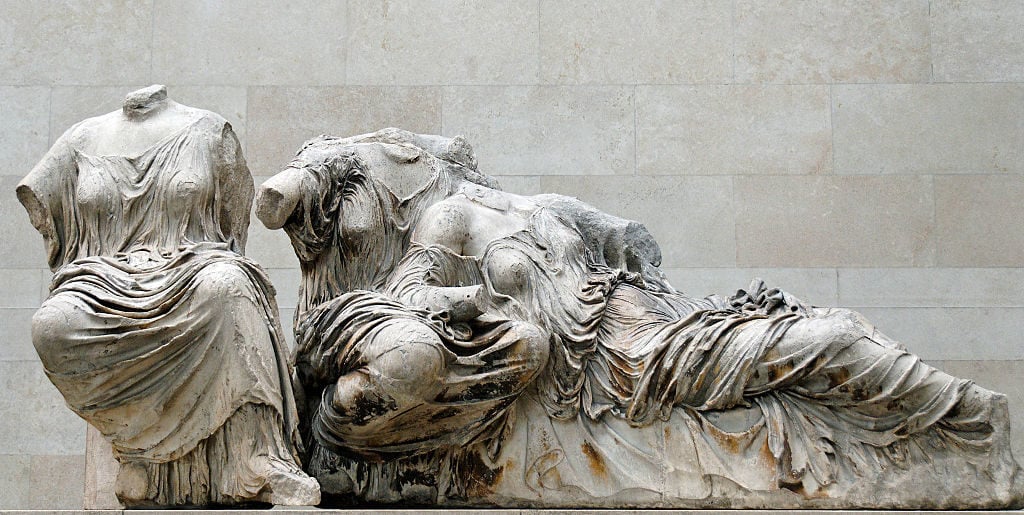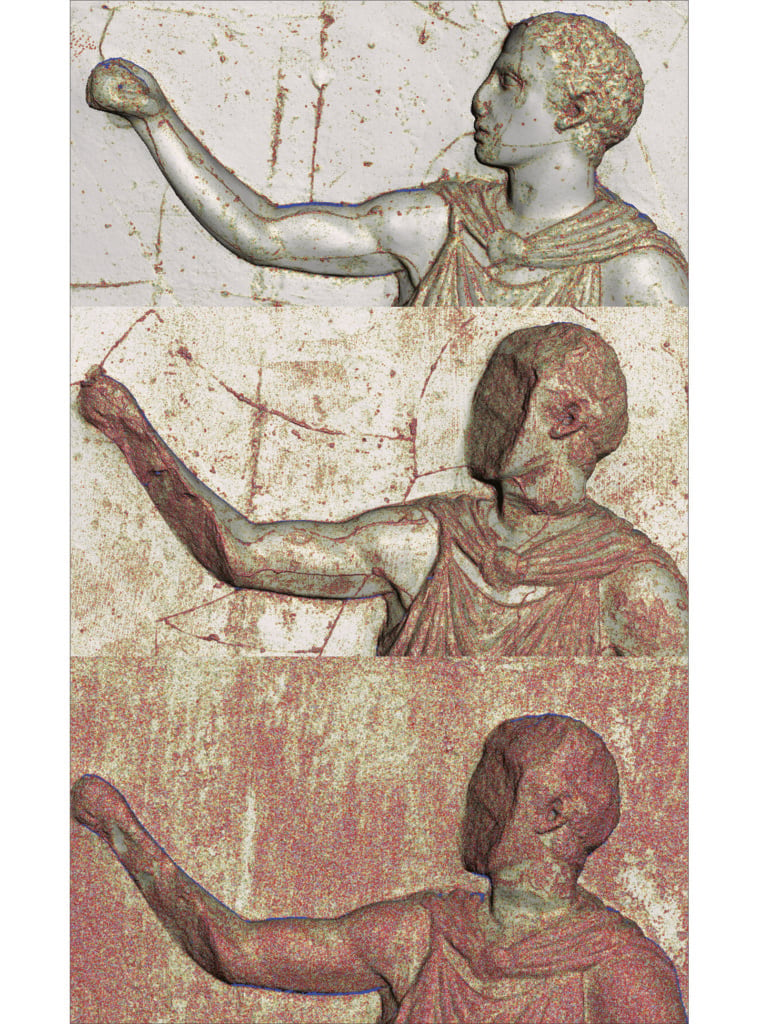Art World
Plaster Casts of the Elgin Marbles Are Actually Better Preserved Than the Marbles Themselves, According to a New Study
3D scanning helped show the ways in which early 19th-century plaster casts preserved details of the Elgin Marbles.

3D scanning helped show the ways in which early 19th-century plaster casts preserved details of the Elgin Marbles.

Karen Chernick

Lord Elgin didn’t want to lose any more Parthenon marbles. The ancient temple atop the Athenian acropolis had already been through an ordeal: marred by a 3rd century AD fire, damaged when the temple was converted into a church around 600 AD, and partially blown up in 1687 while used for gunpowder storage.
The 19th-century Scotsman’s methods for preserving the marble sculptures created by Phidias and his workshop are famously controversial, and still make headlines. In 1802 Elgin removed around half of the Parthenon marbles, shipping them to England (later to be sold to the British Museum, where they’ve been on permanent display since 1817). But what many don’t know is that he also cast several of the marbles that he left behind, in plaster.
Dr. Emma Payne, a Classics department fellow at King’s College, recently analyzed these casts and the results grant Elgin a bit of good press, revealing that his reproductions preserved details lost from the in situ originals over the past two centuries. Elgin’s plaster casts are a time capsule of how the sculptures appeared in 1802, whereas the originals remained outdoors, suffering some damage until they were transferred to the Acropolis Museum in 1993. In the interim, those Parthenon marbles were subjected to vandalizing Victorian-era tourists and air pollution (surprisingly, the former took a greater toll on the artworks).

3D models of a portion of the marbles shows Elgin’s casts (top) compared to the original sculpture at bottom. Imaging conducted courtesy of the Trustees of the British Museum and the Acropolis Museum. Image courtesy of Dr. Emma Payne and Antiquity Publications Ltd.
Payne produced 3D scans of both the plaster casts and the Parthenon originals, overlaying the images for comparison. “The 19th-century casts reproduce the marble sculptures more accurately than expected and they definitely preserve some features lost from the originals,” Payne told Artnet News. “We need to study them very closely to understand exactly what it is that they preserve.”
Payne’s research ironically reveals that in some cases, fragile gypsum plaster can leave a more durable art historical record than marble left to the mercy of the elements. Her study is part of a renewed interest in plaster casts as art objects, evidenced by a growing number of scholarly conferences on the subject and the 2018 reopening of the Cast Courts display at the Victoria & Albert Museum in London.
Present-day efforts to preserve ancient monuments no longer involve plaster. “It is much rarer for such casts to be made today, particularly because we are now much more aware of potential conservation issues that can arise during molding processes,” explains Payne. “Nowadays for recording on site, we would more typically use non-contact 3D imaging.” Two years ago, a Reproduction of Art and Cultural Heritage conference attended by 19 leading international cultural institutions encouraged the use of such technology. While Elgin converted the Parthenon’s west frieze into plaster molds, the 21st century equivalent—3D scans—provides new tools to save artwork and artifacts from the ravages of time.